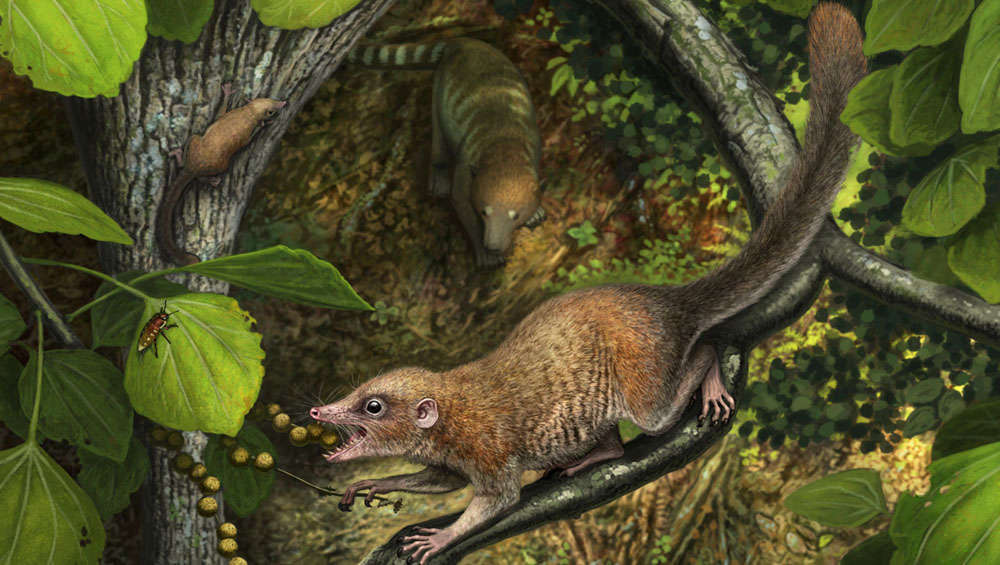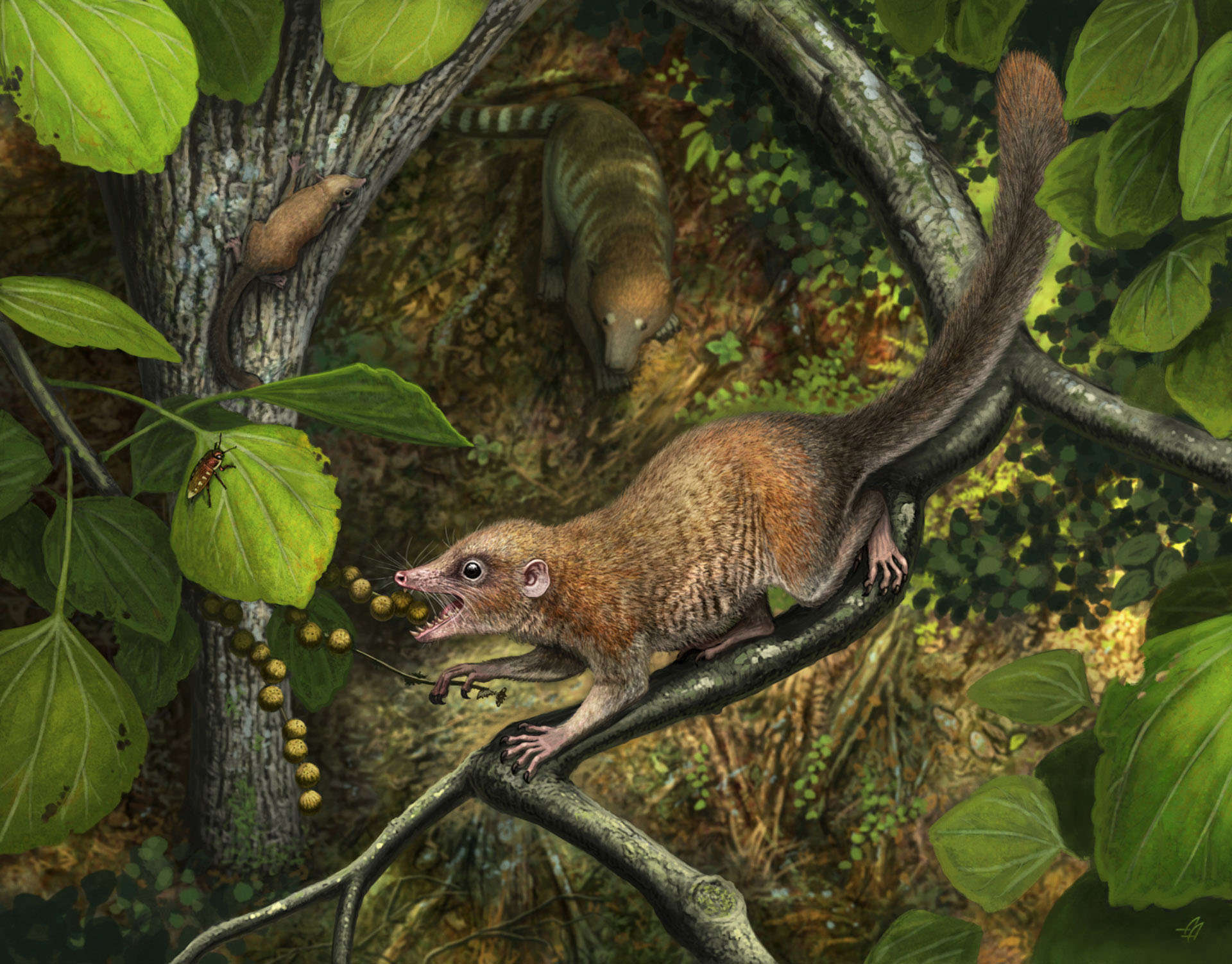Create a free profile to get unlimited access to exclusive videos, sweepstakes, and more!
These prehistoric possum-like things were our oldest primate ancestors

It sounds like a creature feature, but our oldest known ancestors looked more like a mashup of a possum and a lemur than anything remotely human.
Paleontologists have unearthed 65.9-million-year-old fossils of Purgatorius that are now the oldest primates ever found in the fossil record. We are actually related to these plesiadapiforms even though you can’t really see the family resemblance. These creatures were the ancestors of modern primates, and are thought to have first appeared some time after that killer asteroid annihilated the dinosaurs. Fossilized teeth from two different species of Purgatorius are now saying it may have been creeping around right when that fateful asteroid plummeted towards Earth.
“Plesiadapiforms are crucial to understanding the evolutionary and ecological origins of primates and other euarchontans (treeshrews and colugos) as well as the traits that separate those groups from other mammals,” said vertebrate paleontologist Wilson Mantilla, who co-led a study recently published in Royal Society Open Science.
But wait. What is a primate, really? And what even is a plesiadapiform? If Purgatorius is imagined to have looked something like a lemur, lemurs are primates, so that vision isn’t too far off. The obvious ones are monkeys and apes — humans are apes (however much some people want to deny it), but so are lemurs, lorises, aye-ayes, and tarsiers, among others. What is unusual about primates is how much they rely on vision. Tarsiers don’t have those huge alien orbs for nothing. Other standout features of primates are long fingers and big toes that have nails instead of claws, and of course, those famous opposable thumbs.
Plesiadapiforms were around for 25 million years after the last non-avian dinosaur bit the dust. Their fossilized remains could tell us how and when primates evolved, and are now revealing that they were around longer than assumed. Most were tree-climbers that shared our long fingers, and one species had a big toe that stood out much like ours do. Their teeth were also similar.
Some problems that have sparked debate are that plesiadapiforms still had claws, and, more importantly, did not seem to rely on vision nearly as much based on the placement of the orbits on their skulls. Some scientists have refused to see them as primates because of this.
The Purgatorius teeth found by the team were determined to be from one known and one previously unknown species, and are the strongest evidence yet for these animals having existed while dying dinosaurs were taking their last gasps. An age of nearly 66 million years means that the first Purgatorius species emerged right when the dinosaurs went down, meaning it is the strongest evidence ever that they showed up during the late Cretaceous. What the scientists could definitely say was that they flourished at a time when 75% of life on Earth had been wiped out. Purgatoriids diversified pretty fast after that.
“Purgatoriids were…among the first known placental mammals to diversify, both taxonomically and ecologically, following the Cretaceous–Palaeogene (K/Pg) mass extinction that resulted in the loss of all non-avian dinosaurs,” Mantilla said. “Understanding the detailed pattern of this seminal diversification event thus has implications for understanding the evolutionary radiation of placentals and the K/Pg biotic recovery on land.”
Though paleontologists have hypothesized that primates spawned during the Cretaceous period, some still believe that primates could have been around before the mass extinction and actually survived it. There is just no fossil proof of that yet. However, it does raise both eyebrows and questions. If Purgatorius really did appear right around the asteroid strike and had not come onto the scene before then, whatever it evolved from is possibly an even older ancestral primate. The other possibility is that Purgatorius was the first proto-primate to evolve from this mystery ancestor. At least for now, nobody knows.
So if you thought looking in the mirror and seeing a caveman in the back of your mind was unreal enough, just imagine a purgatoriid staring back through tens of millions of years.



























